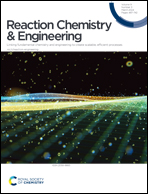Research on zinc cobaltate porous mesh materials with different percentages of Sm doping: synthesis, structural and capacitive properties analysis
Abstract
Zinc cobaltate composites (Sm–ZnCo2O4) with different doping concentrations (1%, 3%, and 5%) were prepared by a hydrothermal method and electrochemical deposition. The phase structures, microstructures, and morphologies of the samples were determined using XRD, SEM, and TEM. The experimental results show that the as-prepared Sm–ZnCo2O4 has a porous network structure and high purity. We further studied the electrochemical properties of Sm–ZnCo2O4 and found that its electrical conductivity could be improved by suitable doping with Sm. Increasing the number of oxygen vacancies helped to promote ion transfer and electron diffusion. The results demonstrated that when the doping amount of the Sm was 3%, Sm–ZnCo2O4 electrode materials showed the best cyclic stability. Under the conditions of the current density of 5 Å g−1, the specific capacity was 1506 F g−1. On gradually changing the current density and cycling 700 times, the specific capacity remained at 1500 F g−1, equivalent to 99.6% of the initial specific capacity. These results show that 3% Sm–ZnCo2O4 has good cyclic stability. We also assembled a 3% Sm–ZnCo2O4//CNTs asymmetric solid-state device. At the current density of 1 Å g−1, the specific capacitance of the device was 181 F g−1. After 10 000 cycles of charge and discharge testing, its retention rate was 95%. These results indicate that the asymmetric device has good cycle life and cycle stability.



 Please wait while we load your content...
Please wait while we load your content...